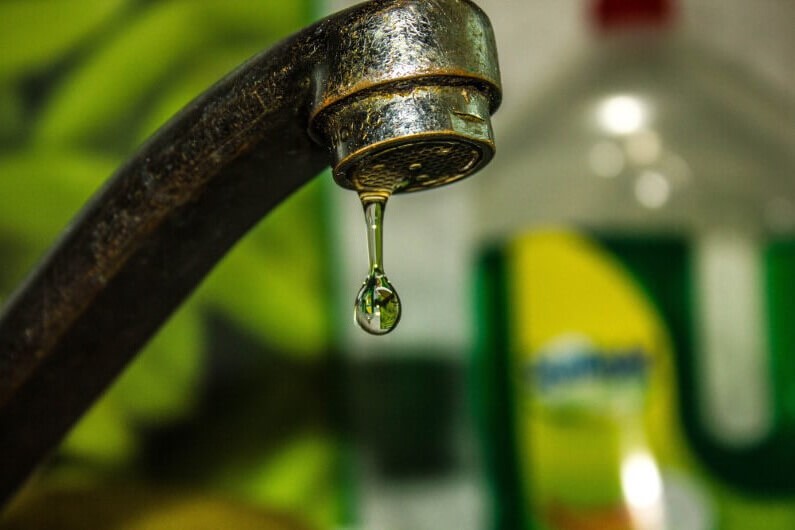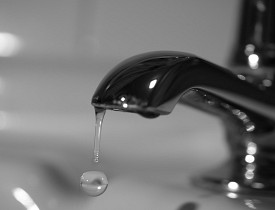Which It's Crucial to Resolve a Malfunctioning Faucet
Which It's Crucial to Resolve a Malfunctioning Faucet
Blog Article
They are making a number of great pointers related to Why Is It Important To Fix Your Leaking Tap/Faucet? overall in the content beneath.

Dripping faucets could look like a minor hassle, but their impact exceeds just the annoyance of the audio. From drainage to sustaining unneeded economic costs and health risks, disregarding a dripping tap can cause numerous consequences. In this write-up, we'll explore why it's essential to address this usual house issue immediately and effectively.
Waste of Water
Environmental Effect
Dripping faucets add dramatically to water waste. According to the Epa (EPA), a single faucet trickling at one drip per second can lose greater than 3,000 gallons of water annually. This not just pressures water sources however likewise affects ecosystems and wild animals dependent on them.
Step-by-Step Guide to Dealing With a Dripping Faucet
Devices Needed
Before attempting to fix a trickling faucet, gather the necessary devices, consisting of an adjustable wrench, screwdrivers, replacement components (such as washing machines or cartridges), and plumber's tape.
Usual Tap Issues and Their Solutions
Determine the type of faucet and the particular issue creating the drip. Common problems consist of worn-out washing machines, corroded shutoff seats, or faulty O-rings. Describe producer guidelines or online tutorials for detailed advice on fixings.
Financial Expenses
Enhanced Water Expenses
Past the environmental impact, dripping faucets can inflate water expenses considerably. The built up wastage in time equates into greater energy costs, which can have been avoided with prompt repair work.
Potential Residential Or Commercial Property Damage
Additionally, extended trickling can cause harm to fixtures and surface areas bordering the tap. Water accumulation can trigger discoloration, corrosion, and even architectural issues if left unattended, leading to extra repair service expenses.
Health Worries
Mold And Mildew and Mold Growth
The consistent presence of dampness from a dripping tap produces an excellent environment for mold and mildew and mold growth. These fungi not just jeopardize indoor air high quality yet likewise position wellness threats, particularly for individuals with respiratory problems or allergies.
Waterborne Diseases
Stationary water in trickling taps can come to be a breeding ground for germs and other virus, boosting the threat of waterborne illness. Pollutants such as Legionella germs prosper in stagnant water, possibly causing severe ailments when ingested or breathed in.
Do it yourself vs. Expert Repair
Benefits and drawbacks of DIY Fixing
While some may try to repair a trickling faucet themselves, DIY repairs feature their very own set of obstacles. Without proper expertise and tools, DIY efforts can intensify the issue or cause incomplete repair work, lengthening the problem.
Benefits of Employing a Professional Plumber
Working with an expert plumber ensures that the underlying root cause of the dripping tap is dealt with properly. Plumbing technicians have the know-how and equipment to detect and fix tap concerns efficiently, conserving time and decreasing the danger of additional damages.
Environmental Responsibility
Specific Payment to Preservation
Taking obligation for dealing with leaking faucets lines up with broader initiatives towards water preservation and environmental sustainability. Every person's actions collectively make a substantial influence on maintaining precious sources.
Sustainable Living Practices
By focusing on prompt repair services and taking on water-saving behaviors, individuals contribute to sustainable living techniques that benefit both present and future generations.
Preventive Measures
Regular Upkeep Tips
To avoid dripping taps, perform regular upkeep such as cleansing aerators, checking for leakages, and replacing damaged parts quickly. Furthermore, consider installing water-saving gadgets or updating to much more reliable fixtures.
Significance of Prompt Repairs
Resolving dripping taps as quickly as they're noticed avoids additional water waste and prospective damage, eventually saving both water and money in the long run.
Effect On Home Worth
Assumption of Well-Maintained Building
Keeping a residential property in good condition, consisting of resolving upkeep problems like trickling taps, boosts its regarded worth and worth among possible customers or lessees.
Impact on Resale Worth
Residences with well-maintained plumbing components, including faucets, command higher resale worths in the property market. Resolving dripping faucets can add to a favorable impact during home assessments and settlements.
Verdict
Resolving a dripping faucet exceeds plain convenience; it's a crucial step towards saving water, reducing financial costs, and securing health and wellness and residential or commercial property. Whether with DIY repair services or professional help, acting to deal with dripping taps is a tiny yet impactful method to advertise responsible stewardship of sources and add to a much healthier, a lot more sustainable future.
How to Fix a Dripping or Leaky Faucet
A leaking faucet is one of the most common problems that homeowners encounter, but it being commonplace doesn’t make it any less annoying. The constant drip drip drip of a leaking bathtub faucet, showerhead, or sink tap can disturb your home’s serenity. Left neglected, a dripping faucet can also result in higher water bills and discoloration or mold growth in your sink or plumbing fixtures.
Fortunately, you don’t have to be a trained plumber to know how to stop a dripping faucet. With some basic tools, replacement parts, and a little patience, leaky faucet repair is a breeze. In this article, we’ll explain what causes dripping faucets and how you can fix them.
What Causes a Leaking Faucet?
Kitchen and bathroom faucets come in all manner of designs, but most involve some combination of valves, O-rings, seals, and washers. The O-ring is usually the weakest link, but any one of these pieces can wear down over time. Heat, moisture, temperature fluctuations, minerals, mold, and movement can contribute to warping and corrosion, breaking the watertight seal. This just comes with the territory of being a homeowner. Everything is always subject to wear and tear, and some component parts of your appliances and fixtures need to be replaced on occasion. At least replacement O-rings are cheap!
More rarely, dripping faucets can be a symptom of excessively high water pressure. Were this the case in your home, you would probably notice that the leak is not isolated to one faucet. Water pressure issues are harder to resolve on your own. We recommend contacting a professional plumber if you suspect your water pressure is too high.
How to Fix a Dripping Faucet
Pipe wrench or monkey wrench Allen wrench set Screwdrivers Old towel or rag Shut off the water.
Before you do anything, you need to turn off the water to keep from drenching your kitchen or bathroom. You should find a valve under the sink and against the wall. Once you’ve turned this valve, try turning the faucet on to confirm that the water source has been cut off.
If you can’t locate your local valve for the faucet you’re working on, you can always shut off the water to the house at the main valve. Of course, this will prohibit anyone from using the sinks, showers, or toilets while you’re working on the faucet that’s giving you trouble.
Plug or block the drain.
You’ll be disassembling the faucet and removing some small bits of hardware. Plug the drain with a stopper or rag to avoid the possibility of a small screw falling into your P-trap.
Take apart the faucet assembly.
There are several varieties of kitchen and bathroom faucets, each with its own manner of assembly. For detailed instructions on how to disassemble your faucet, you can refer to the fixture’s manual or contact the manufacturer. If you know whether you have a ball, disc, cartridge, or compression faucet, you can find detailed schematics online.
In general, you need to begin by removing the faucet handles. You might notice a small screw that you’ll need to remove with a screwdriver or Allen wrench. If you don’t see any visible securing hardware, it’s likely hidden under a decorative cap that can be unscrewed or popped off with flathead screwdriver.
Remove each piece methodically, consulting a schematic when necessary. Take notes or arrange the pieces in such a way to make it easier to correctly reassemble the faucet later.
Remove the cartridge.
Once you’ve removed the handles and securing hardware, you should be able to remove the valve cartridge or stem. Some cartridges will slide right out. Other faucet models will require you to loosen a nut with a pipe wrench before you can remove the valve stem.
Examine the exposed hardware.
With the cartridge or stem removed, inspect the component parts. Check the rubber O-rings for wear and tear. Also examine the seat washer for corrosion or other damage. These pieces are usually the responsible parties for a dripping faucet, but it’s worth inspecting the other component parts while you have the faucet disassembled.
Find replacement parts.
Once you’ve identified which faucet component has failed, find an identical replacement. Your local hardware store should have O-rings, seat washers, and other standard components in stock. If you have a luxury or uncommon faucet, you may have to contact the manufacturer for a replacement part.
It’s a good idea to take your old parts with you to the hardware store so you can compare them with the store’s inventory and be sure you’re purchasing the correct replacement.
Reassemble the faucet.
With your new parts in hand, reconstruct the faucet and handles. Don’t be tempted to overtighten screws or nuts. You might think this could create a better seal, but it can instead damage or bend a delicate part of the assembly and create a new problem for you.
Turn on the water and test the faucet.
The only thing left to do is test your work. Unplug the sink, turn the water back on, and try the faucet. Congratulate yourself on a job well done!
https://www.libertyhomeguard.com/how-to-fix-a-dripping-or-leaky-faucet/

I'm just very inquisitive about 4 Common Reasons for a Leaky Faucet and I'm hoping you enjoyed reading the page. Sharing is good. You won't know, you might be doing someone a favor. Thanks so much for taking the time to read it.
Report this page